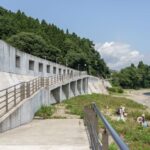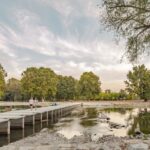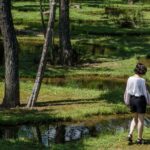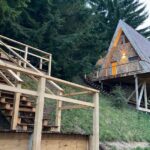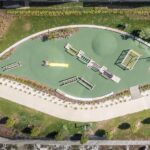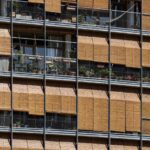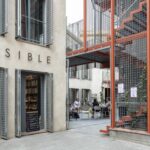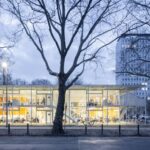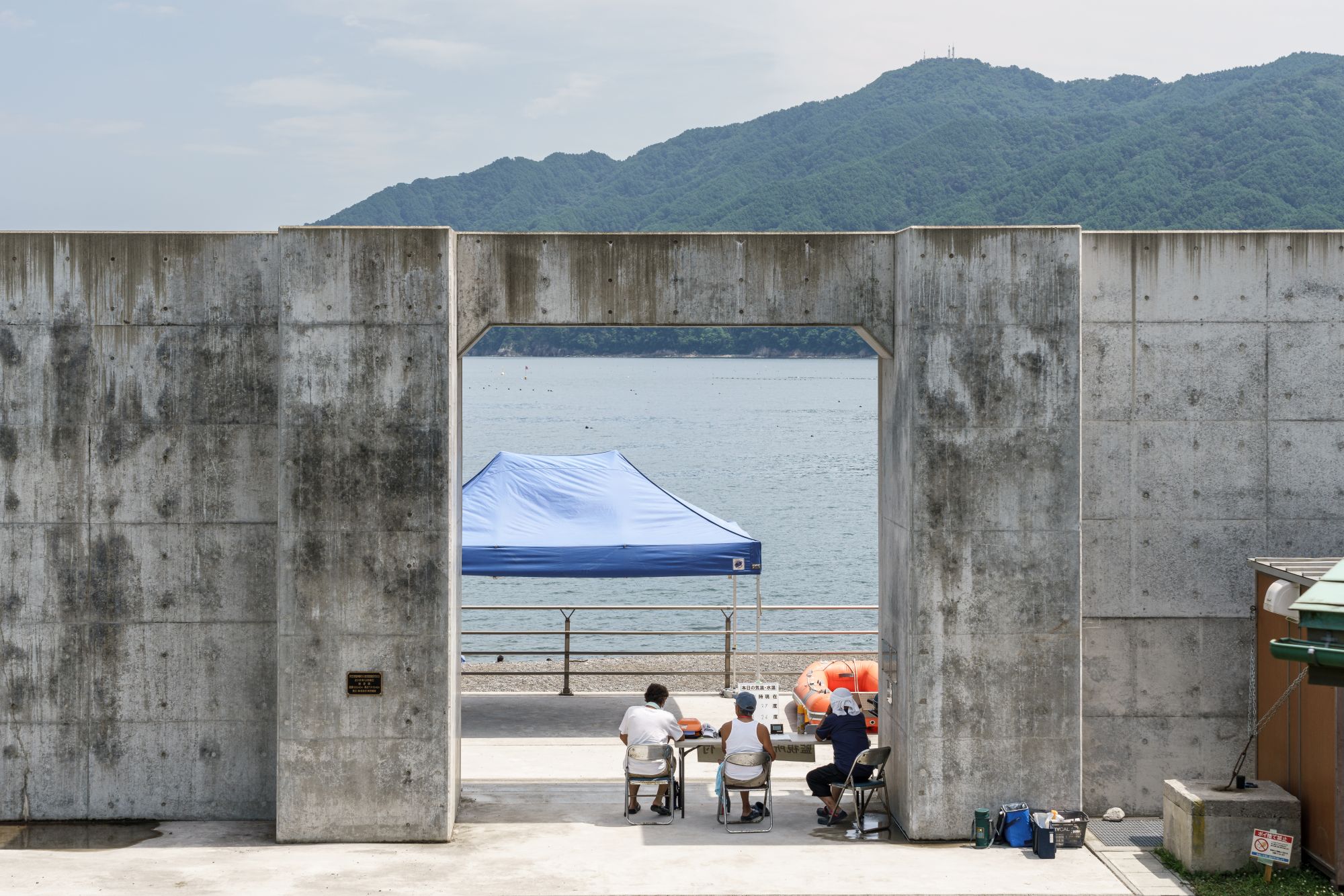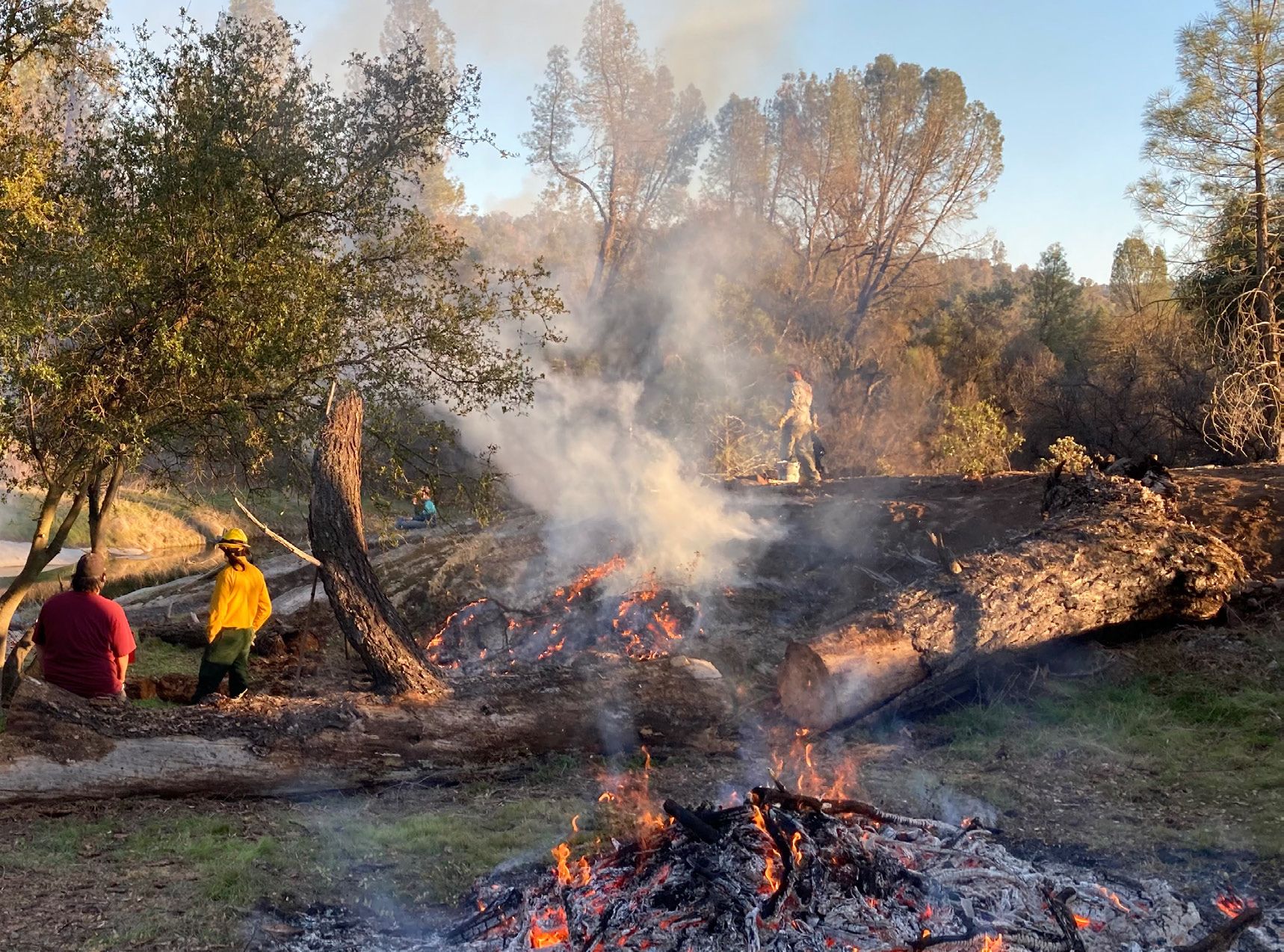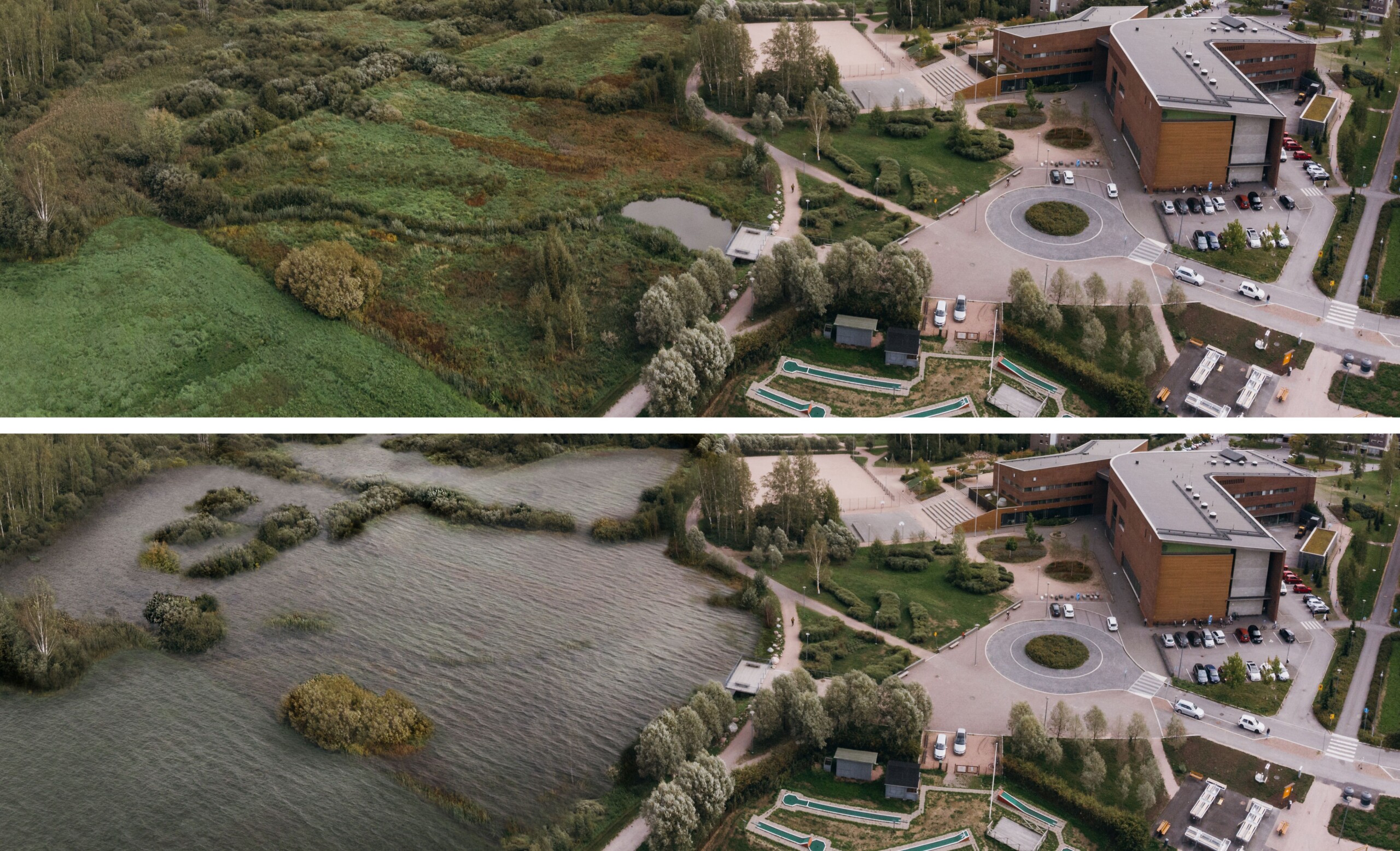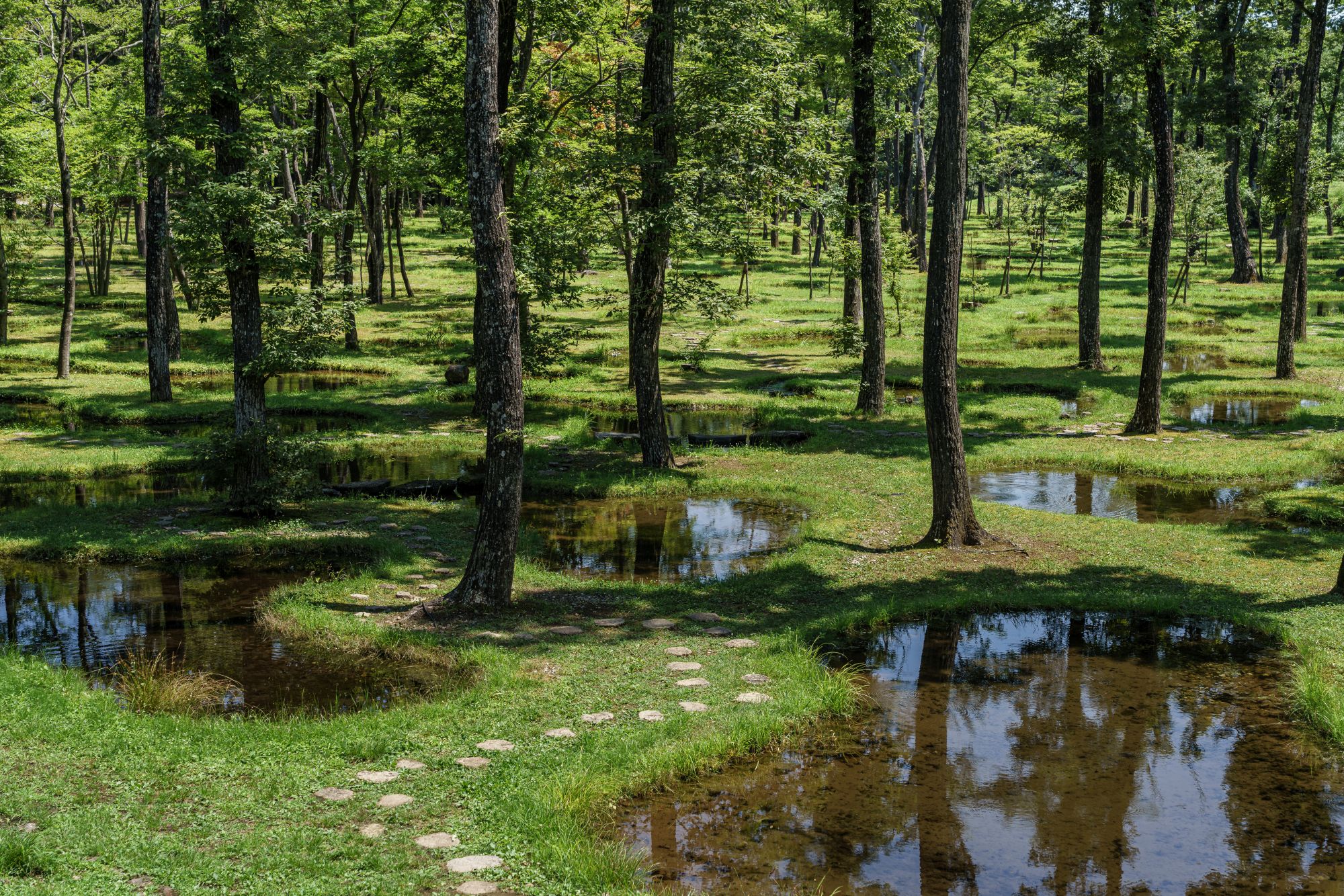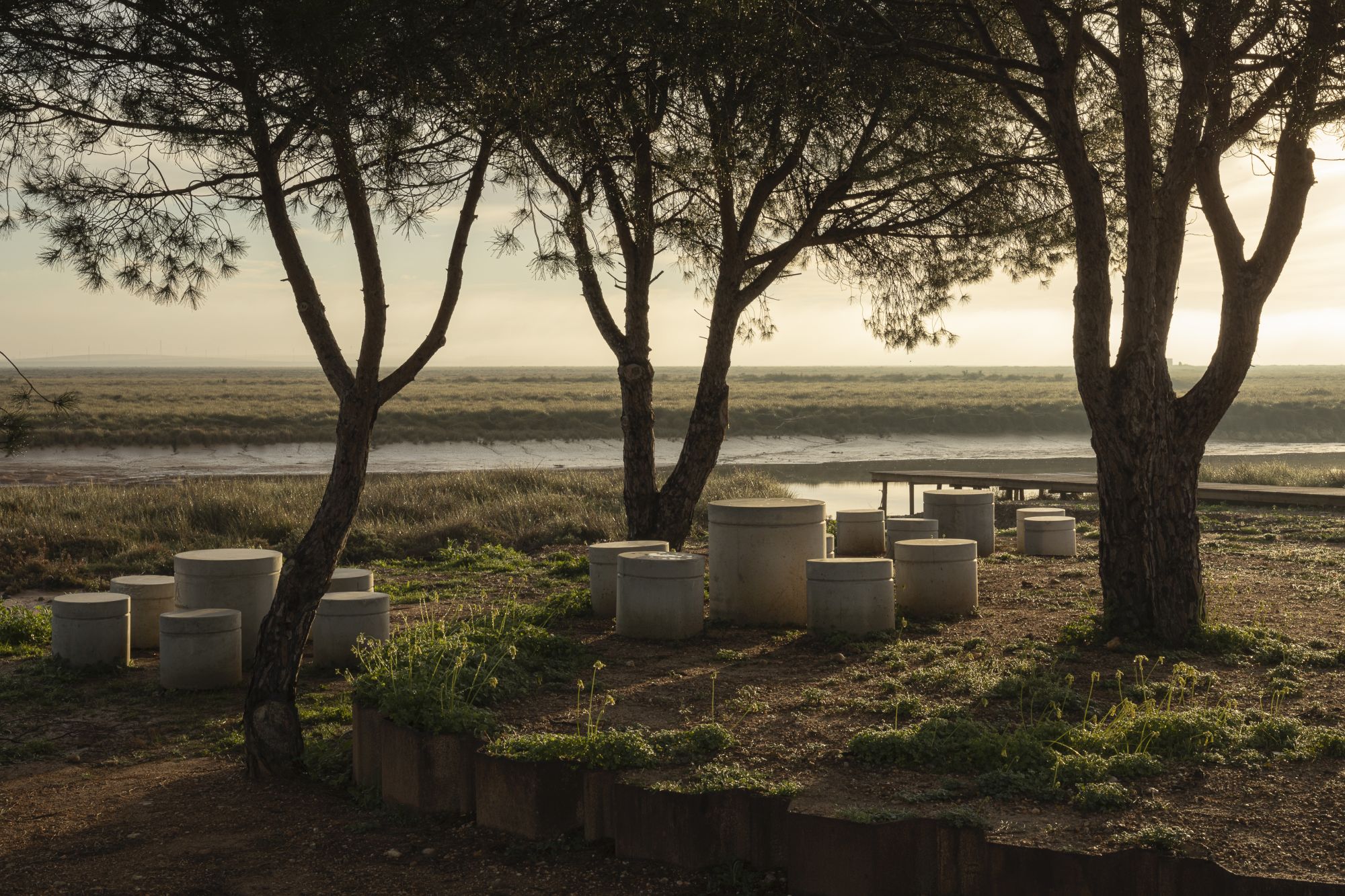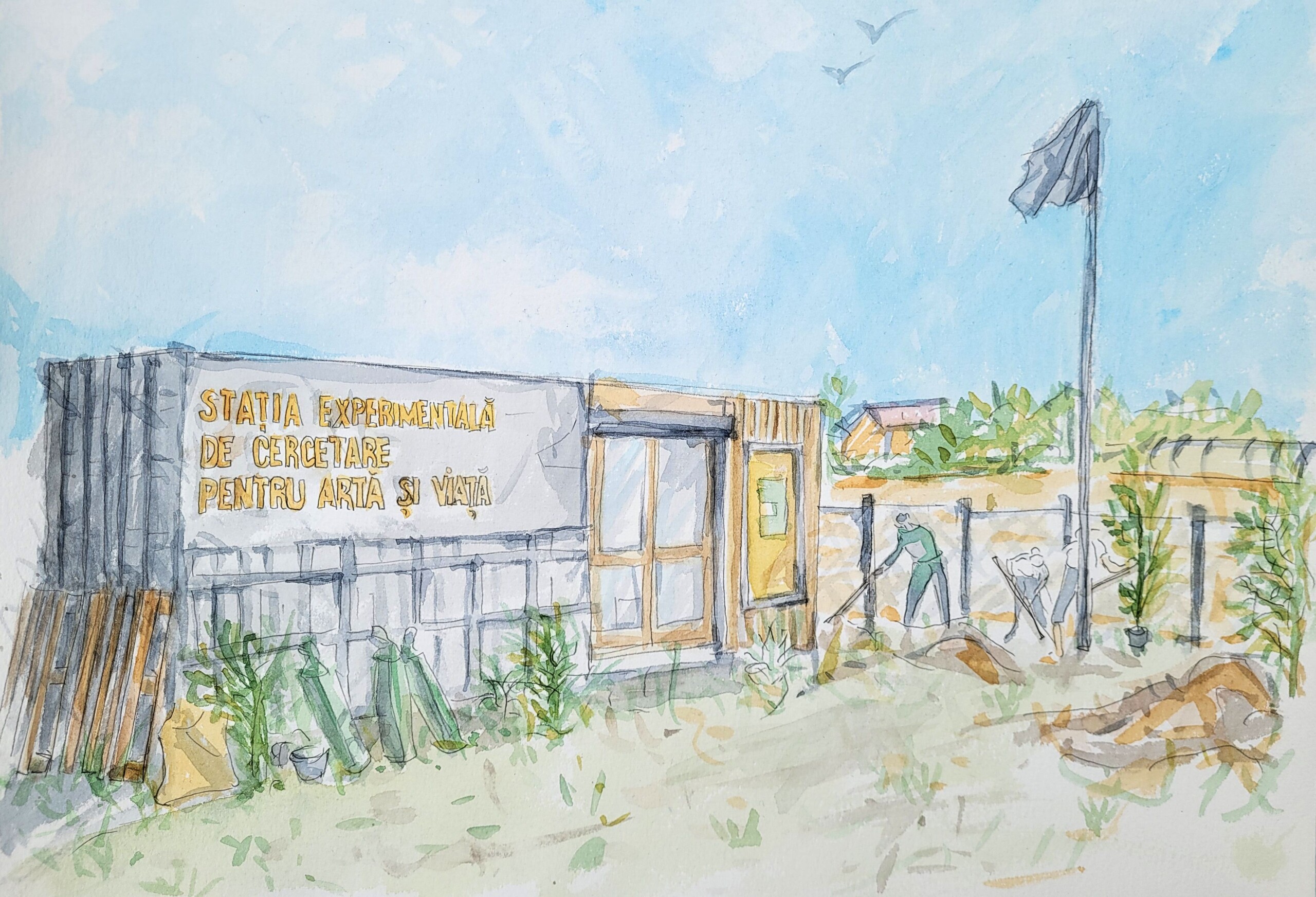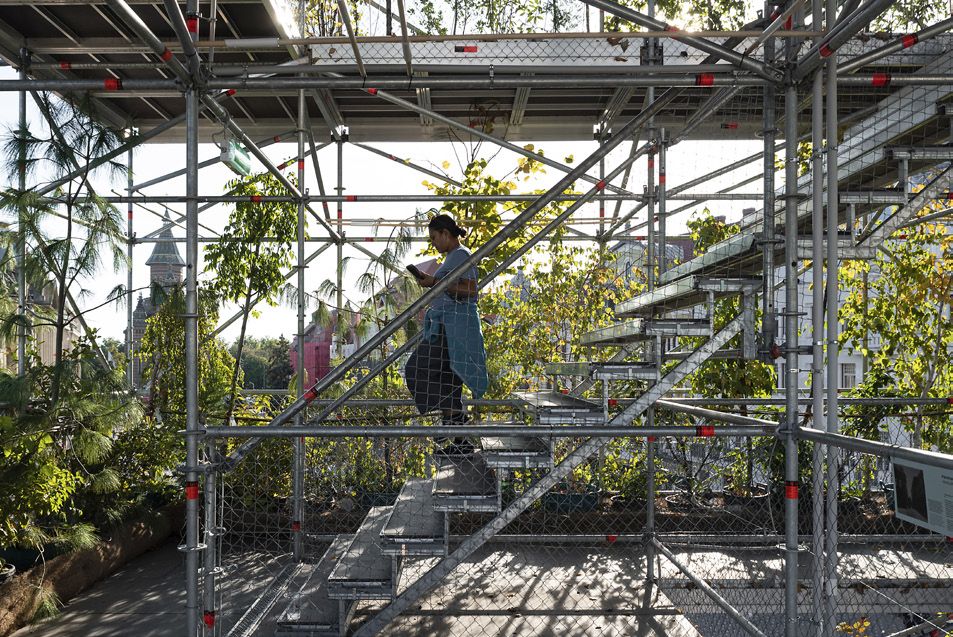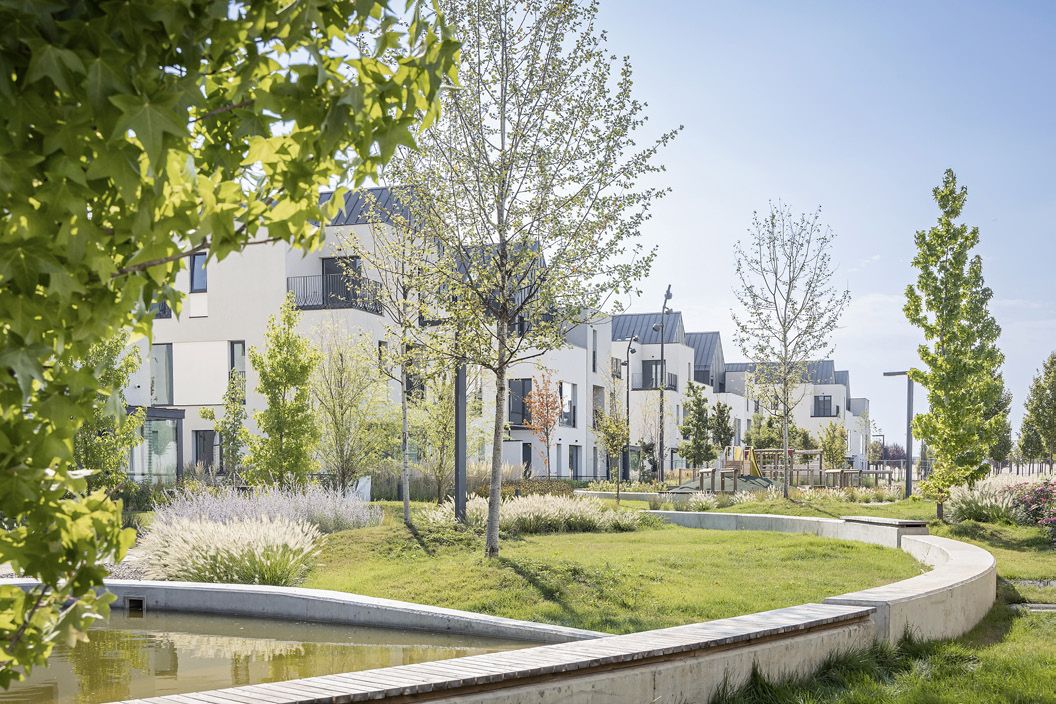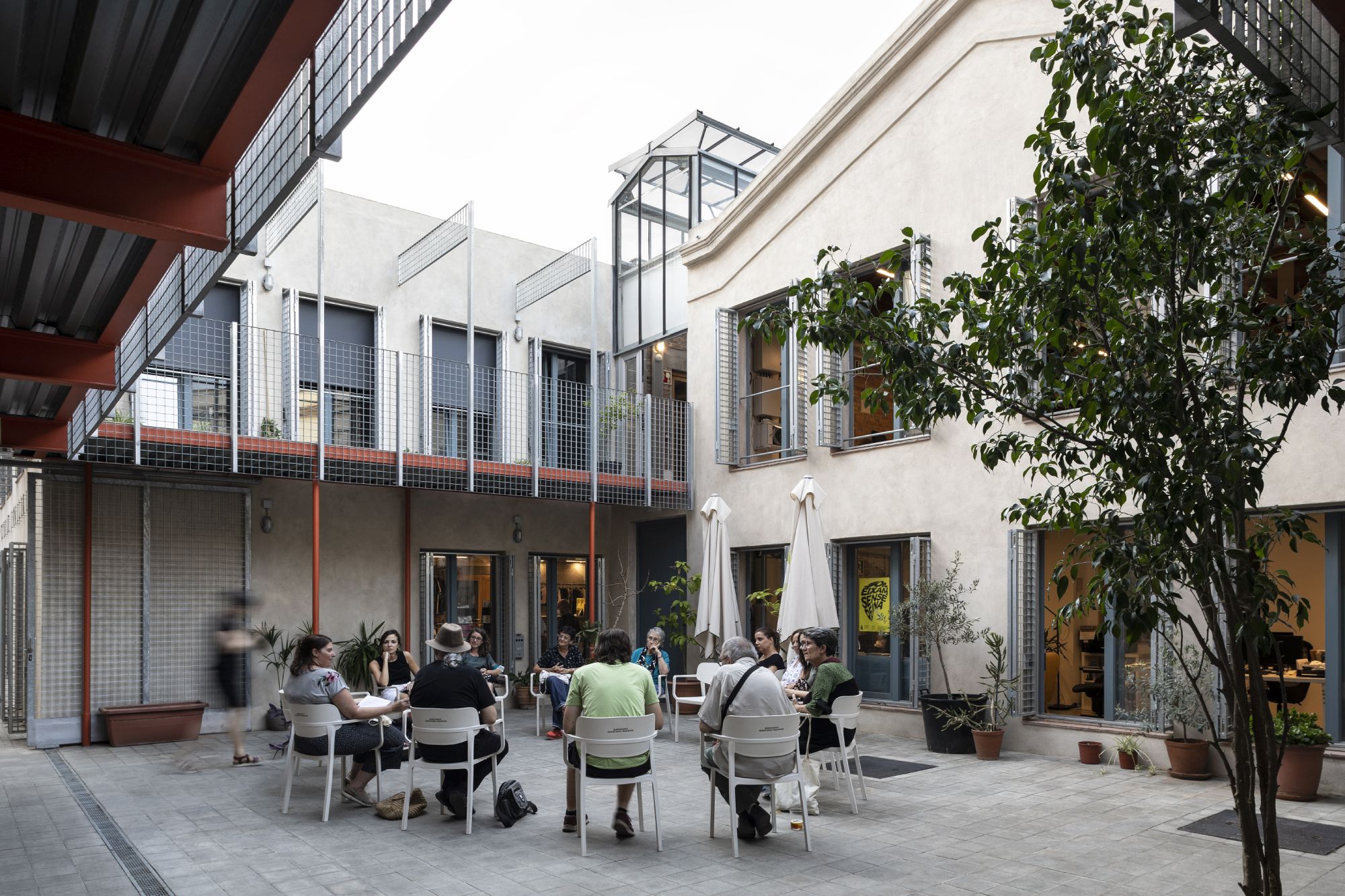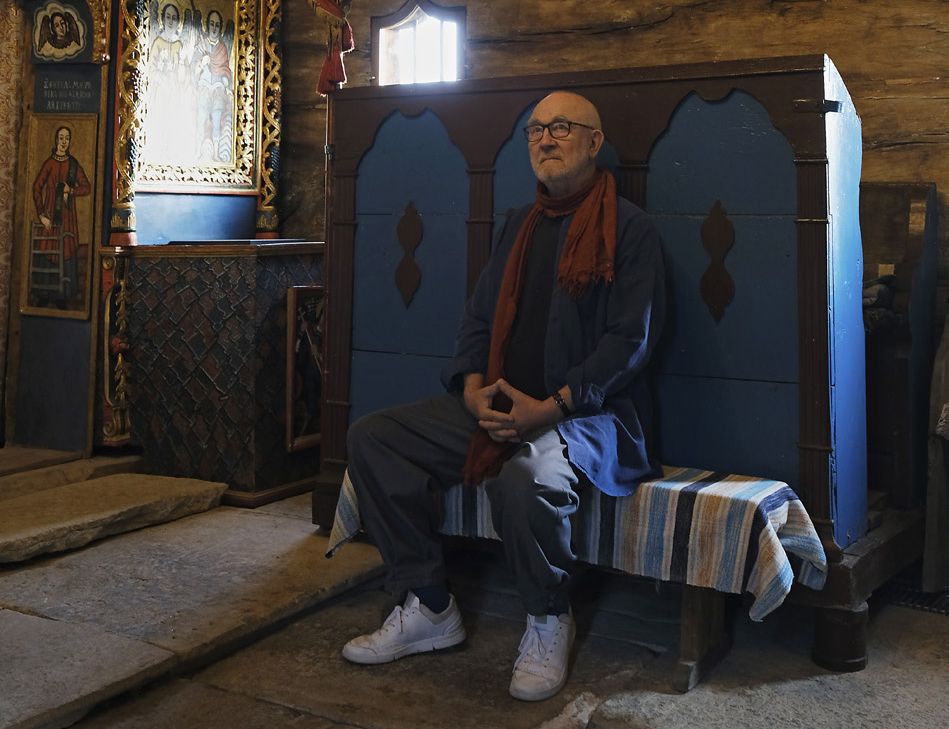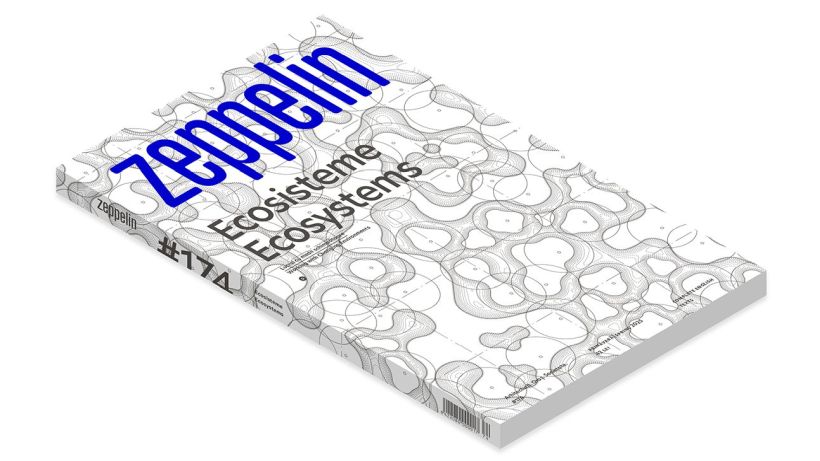What is a green city and why do we need one? Now that climate change is being questioned by people with (too much) authority and programmes to tackle it are slowly grinding to a halt, we suggest we think about ecosystems, i.e. the relationship between living organisms and the environment: nature -wildlife relationships, relationships between people and alternative ways of living without (for now) going outside the system.
Edito: I bet, you bet, they bet
Text, photo: Cătălina Frâncu
DOSSIER: Ecosystems
Intro
Text, coordinators: Ștefan Ghenciulescu, Cătălina Frâncu
This issue is about less obvious architecture that employs living matter and is part of a system of relationships.
The Great Wall of Japan
Text / photo: Ștefan Tuchilă
March 11, 2011, is a date etched into the minds of all Japanese people: the day of the “Great Tsunami.” At 2:46 PM, Japan was struck by an extremely powerful earthquake that affected the northeastern coast of the country.
Reimagining Collective Futures With Fire
California Wildfires
Text: Anousheh Gul Kehar
Photo: Anousheh Gul Kehar, CSU/CIRA & NOAA, Native Land Digital, Native Land CA
The LA fires drastically amplify the features of climate collapse in the fire-prone terrain — not least the tragedy of people losing loved ones, communities, and homes.
Closer to the Water
Learning from SAU—Taller d’Arquitectura in Spain, Taller Capital in Mexico, SLA—Stig L. Andersson in Denmark and Loci Landscape Architects in Finland
Text: Ilinca Pop
Photo: Andrés Flajszer, Rafael Gamo, SLA, Mikkel Eye, Københavns Kommune, Marie Damsgaard, Pyry Kantonen Photography
The news last autumn regarding the floods in Spain in October followed the devastation caused by torrential rains along the Romanian shoreline in September. During this time, social media and WhatsApp groups overflowed with harrowing images from late vacations marred by mud and desolation. Following a scorching summer that, for a significant part of the country, was alarmingly dry, the wave of flooding has contributed to the public anxiety surrounding climate change. Climate anxiety is an increasingly widespread phenomenon in the face of how climate change impacts human existence. How can we live with water rather than in fear of it?
The Ecosystem as Idealised Architecture
Junya Ishigami. Art Biotop Water Garden
Reporter: Corina Laza
Photo: Ștefan Tuchilă
When real estate development threatens a 13-hectare forest, a nearby meadow becomes the ideal setting to relocate the 318 trees destined to be cut down. Art Biotop Nasu is a culture resort bearing the name of the nearby mountain. The resort features glassblowing and ceramics workshops, as well as artist residencies, and will soon include a hotel complex. Once a moss-covered forest that was later converted into rice fields, the site has been transformed into a contemplative space by Junya Ishigami’s project.
Wrapping the Marshland
A Landscape Itinerary around the Northern Estuary of the Odiel River, Huelva
Text: ACTA / Intro: Cătălina Frâncu
Foto: Fernando Alda
Living away from the city has a surprising downside. Out of all the greenery, fresh air, community and more affordable housing, the car sticks out its snout full of noxious emissions. Less if it’s electric, but it still pollutes elsewhere. How about being able to travel between villages, go shopping, to the station, to the woods on foot, or by bike? Maybe on a nice road, where there’s a shelter here and there, if you get caught in the rain; a road away from the exhaust fumes of the national roads. ACTA implemented one such project, on a shoestring budget, in which they were able to connect three small towns on the Atlantic seaboard by non-motorized travel routes.
Ari Consult: Four cabins at Șirnea
Text: Răzvan-Ion Dracea
Photo: Călin Stan
The holiday homes were designed for easy construction and for the least disturbance to the site.
Brezoi. Ecosystem Research Through Architecture
The TERRRA Project in Brezoi, the First R-Urban Hub in Romania
Reporter: Cătălina Frâncu
Project, photo: AAA (L’Atelier d’Architecture Autogérée)
Architecture, economy, European scale, tradition, ecosystem and society: all in one place, in the Romanian countryside.
The Experimental Station
Text: Raluca Voinea
We are talking about a Station as an expression of the need to interrupt the precariousness of ongoing transition, but also as a reference to the space stations or the scientific research stations; an experimental place, where we move the focus from cultural production or consumption to testing the possibilities of a habitable future; a space for art, but which challenges art’s limits, takes it out of the comfort zone; and a place for cultivating life, which, for indigenous communities in other parts of the world is understood as a continuity between the human species and what we still call around here nature, which we objectify, distance from us, in order to consume it with detachment.
Ideogram Studio: IRIS ORANGERIE
Text: Ilinca Păun Constantinescu, Tudor Constantinescu
Photo: Iris Orangerie, Nicolas Triboi, Mihai Bonciu
This is mostly about a park. It is an extension of the forest, an unrestricted and natural space, but of a controlled wildness.
Utopia Barcelona
From Superblock to City Ecosystem
Text: Nina Aleydis Millet
Photo: Aleydis Rispa

Barcelona has been at the forefront of urban planning for over a century and has recently embarked on an ambitious new project: Las Superillas (The Superblock). “A superblock is an urban unit larger than a city block, but smaller than a neighborhood, with pacified streets” as defined by the Ada Colau administration. At the beginning, the term coined a mobility plan to push motorised traffic outside the middle of a group of nine blocks. The measure was meant to redeem public space for pedestrians and bikes, allowing access only for residents and service cars. This time, the term ‘Superblock’ became an umbrella concept, covering a series of systematic urban actions. Its aims grew bigger: from the ambition to pedestrianise the centre of the superblock, the project turned into a comprehensive strategy for revamping public space by maximising the amount of greenery, and encouraging proximity commerce, as well as guaranteeing access to housing.
Nature in the city
Text: Lucy Stoica
Photo: Dragoş Grama, Marius Vasile, Laurian Ghiniţoiu, Alina Floca, Alex Lorinţi, Alex Ciobotă
Strategies, Activism, and Projects for Landscape Architecture in Urban Romania/
Four landscape designers active in Romania on working with fresh and ever‑changing plant material.
Landscape as a Construct
Beros Abdul Architects
Interview with Christian Beros
From mineral matter to living matter and what it’s like to be in the middle of a new and necessary profession.
Common‑Sense Architecture
Interview with Eliseu Arrufat, Lacol
Reporter: Cătălina Frâncu
Photo: Milena Villalba, Baku Akazawa, Lluc Miralles, @alvarovaldecantos
A shared workspace, a different approach to collective housing, and other projects from an office that practices good and socially conscious architecture.
An organism for learning
Gustav Düsing & Max Hacke: The Student Center of the Technical University of Braunschweig
Text : Gustav Düsing, Max Hacke
Photo: Iwan Baan
It’s a building, all right. But it’s also an open superstructure, a part of a network of public spaces, an architectural kit of parts and an artificial forest
ZOOM
Ene + Ene Arhitectura:
The Factory and the House, the Wall and the Frame
Text: Mihai Ene, Adela Ene
Foto: Iulius Cristea
One of the main sources of Adela and Mihai Ene’s projects is essential classicism. We perceive it in their permanent strife for a calm, harmonious, and clear object; but I would also say it appears in the almost obsessive architectural tension between massiveness – heavy volumes, the wall as a determinant – and the rhythm given by the composition of thin and repetitive elements.
Budgets, Fame & Education
Interview with Peter Zumthor
Reporter: Cătălina Frâncu
Photo: Dan Felix Paraschiv
Peter Zumthor is known for the harmonious spaces he designs, his close work with materiality and ascetic attitude. Over the years he has inspired generations of architects and beyond. Although he does not believe in conveying architecture through images, he is the subject of one of the most expensive living architect monographs on the market and the author of several books reflecting on his own work: Atmospheres, translated into Romanian by Ilinca Pop, and Thinking Architecture. Looking admiringly to Le Corbusier, Louis Kahn, Oscar Niemeyer and Frank Lloyd Wright, Zumthor positions himself as one of their descendants, and the international image he has built up reinforces this intention.


